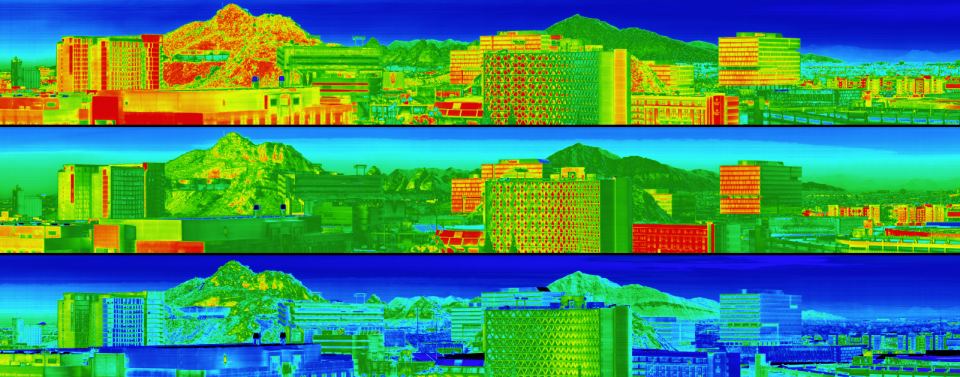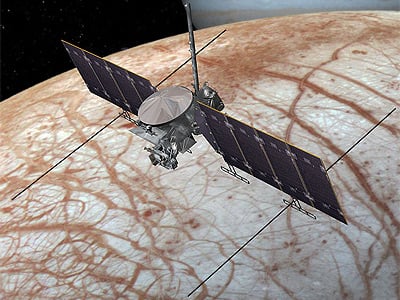The highly anticipated Europa Clipper mission, set to launch in 2024, will investigate Jupiter's moon Europa. This icy moon with a subsurface ocean is considered one of the most enticing places in our Solar System where life might exist. To look beneath Europa's icy crust, the Clipper mission has a host of instruments looking for plumes and 'hot spots.'
A thermal emissions imager, called E-THEMIS (Europa Thermal Emission Imaging System) recently passed a major testing hurdle recently by capturing its "first light" images with its infrared camera.
The camera is being developed at Arizona State University, and so fittingly, the first images are of the scenic campus in Tempe, showing thermal views of the nearby buttes.
"The surface of Europa is extremely cold, but the ocean underneath is warm, liquid water. If that water is coming near the surface through cracks and vents, E-THEMIS will see these warm regions and tell us where ocean water is closest to the surface," said ASU Professor Phil Christensen, who is leading the development of the camera. "Even if water erupted onto the surface many years ago, the ice will still be warm. From these temperature images, E-THEMIS will provide an excellent opportunity to study the geologic activity of Europa."
Christiansen has been involved with similar instruments on other missions, such as the Thermal Emission Imaging Spectrometer on the Mars Odyssey spacecraft.
The Europa Clipper is currently scheduled to launch in October 2024 and arrive at Jupiter in 2030. As an orbiter, it will study this icy moon through a series of flybys. While this is not a life-detection mission, it will conduct detailed reconnaissance of Europa and investigate whether the icy moon, with its subsurface ocean, has the capability to support life.
In 2013, the Hubble Space Telescope spotted water vapor plumes emanating from Europa's south pole. Europa Clipper's instruments will be looking for these plumes. Since these geysers might reach many hundreds of kilometers high, this offers the spacecraft a chance to 'taste' Europa's oceans without ever touching down – much like Cassini did with the plumes on Enceladus.
Instruments on board Europa Clipper i ncludes several types of cameras that will search for plumes, watching for their silhouettes against the bright light reflected from Jupiter. Plumes may be visible in ultraviolet, and if so, the team will be able to use spectroscopy to determine their chemical makeup.
The E-THEMIS will look for hotspots in the ice sheets, which would hint at recent or ongoing eruptions. If it finds warmer-than-expected spots of ice, it could mean Europa's suspected ocean is closer to the surface in that location. Other instruments can target those areas to learn about the moon's subsurface chemistry.
The "first light" E-THEMIS camera test images were taken from the rooftop of the Interdisciplinary Science and Technology Building 4 (ISTB4) on the ASU Tempe campus using a specially designed mobile cleanroom laboratory, which kept the camera safe from dust, microbes and aerosol particles.
"Our team spent months developing a portable clean lab to safely transport E-THEMIS to the roof of the building and collect data in a controlled environment," Christensen said. "The instrument worked beautifully and is in excellent focus." Christensen said.
Fi nd out more about Europa Clipper at this NASA website.
Lead image caption: E-THEMIS temperature color image from the “first light” test, taken from the rooftop of ISTB4 on the ASU Tempe campus. The top image was acquired at 12:40 p.m., the middle at 4:40 p.m. and the bottom image at 6:20 p.m. (after sunset). Temperatures are approximations during this testing phase. Image credit: NASA/JPL-Caltech/ASU
Source: Arizona State University
 Universe Today
Universe Today


